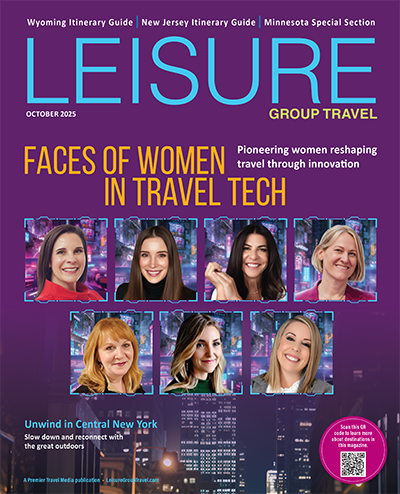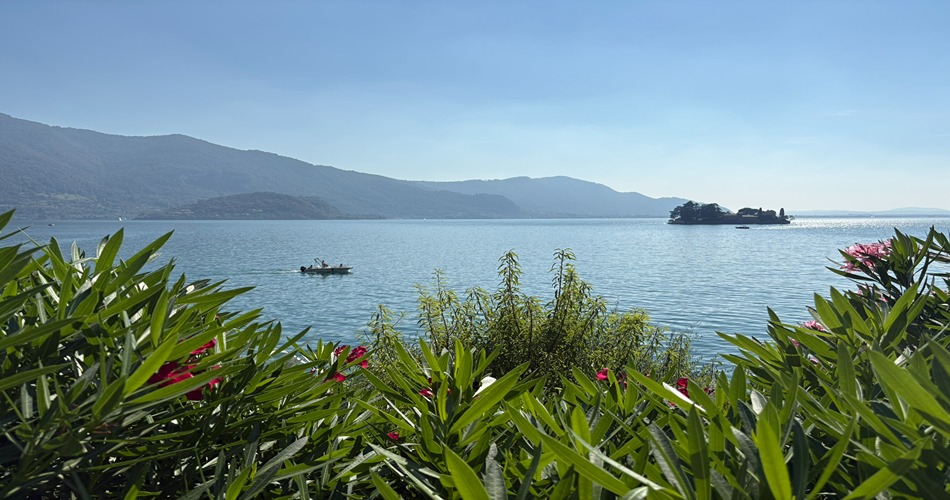America’s National Churchill Museum and other group-friendly attractions captivate visitors looking for nostalgia in Fulton, Missouri
A historic speech given 75 years ago by one of the 20th century’s greatest statesmen fuels the tourism machine today in Fulton, Missouri.
It was at Westminster College where the term “Iron Curtain,” coined in an address by Winston Churchill, became part of the geopolitical lexicon for two generations that lived through the Cold War, a tense battle of wills waged between Western democracies and the repressive Soviet Union.
Visitors to America’s National Churchill Museum, on the campus of Westminster College, learn about the March day in 1946 when the ex-British prime minister and President Harry Truman came to town. Museum-goers also get glimpses into Churchill’s long career of public service, including his heroic leadership during the darkest days of World War II.
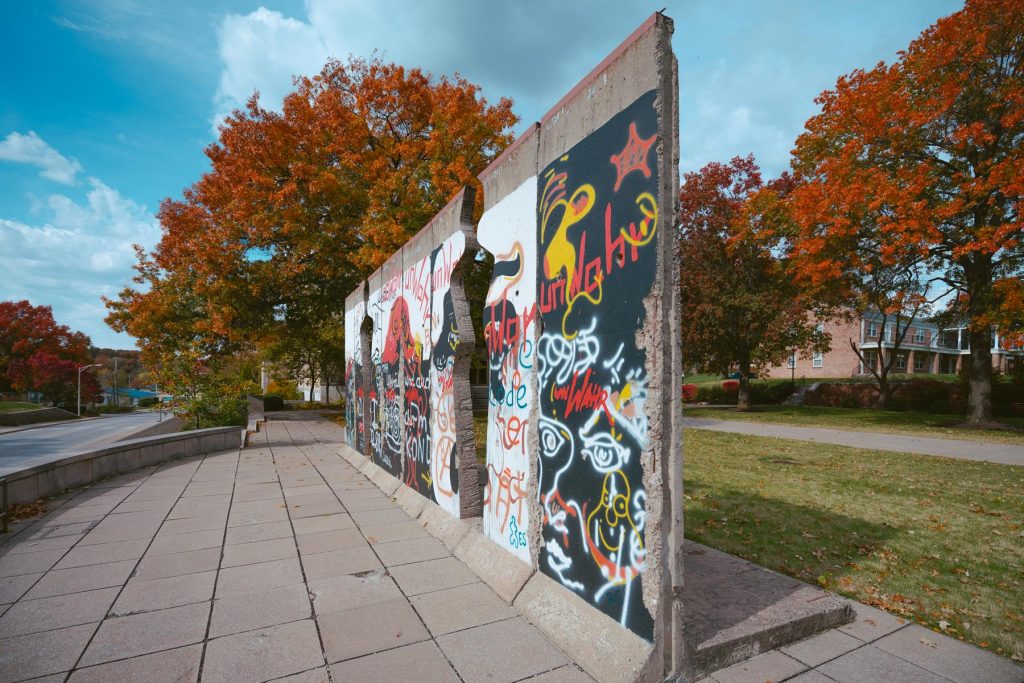
The art installation Breakthrough, crafted by Winston Churchill’s’ granddaughter from remnants of the Berlin Wall, stands on the grounds of America’s National Churchill Museum in Fulton, Missouri. (Photo credit: VisitMO.com)
But wait, there’s more. Sitting on top of the museum galleries is a splendid old church that was transplanted, stone by stone, from London in the 1960s. So, it’s really a two-part story here at the corner of Westminster Avenue and Seventh Street.
At the museum, black-and-white newsreel footage shows a snippet of the “Iron Curtain” speech and scenes of thousands of townspeople who lined downtown’s brick streets to see Churchill and Truman motor by. Churchill’s 50-minute oration, officially titled “Sinews of Peace” but universally known as the “Iron Curtain” speech, called on the West to stand up to the expanding “Soviet sphere” in Eastern Europe and warned of its threat to world peace. Uttered with a dramatic gesture, the evocative phrase “From Stettin in the Baltic, to Trieste in the Adriatic, an iron curtain has descended across the continent…” effectively marked the beginning of the Cold War. Meant as a wake-up call to freedom-loving nations, his words laid out “a blueprint of how to proceed,” says Tim Riley, the museum’s director and chief curator.

Winston Churchill speaks at Westminster College on March 5, 1946. Seated at his right is President Harry S. Truman.(Photo courtesy of America’s National Churchill Museum)
Many Americans, however, were shocked by Churchill’s rhetoric; some considered him a warmonger. (He had received similar criticism in Britain in the 1930s when he warned of Hitler’s growing power.)
But how did the small Midwestern liberal arts college land the iconic, cigar-chomping world leader as a speaker in the first place?
Churchill received the invitation in a letter from Westminster’s president, but it’s likely he would have ignored the request had it not been for a hand-written note at the bottom from President Truman, who wrote, “This is a wonderful school in my home state. Hope you can do it. If you come, I will introduce you.”
At the time, less than a year after the end of WWII, Churchill’s party had been voted out of office, so he had lost his job as prime minister. “He was somewhat shocked, despondent and depressed,” Riley explains. Having been shunted to the sidelines made Churchill eager to re-establish his pre-eminence as a statesman on the global stage.

Winston Churchill, Harry Truman and Westminster College President Franc McCluer greet crowds during the parade on March 5, 1946, in Fulton. (Photo courtesy of America’s National Churchill Museum)
Churchill had spent two months in balmy Miami working on the “Iron Curtain” speech before traveling to central Missouri. He delivered it in Westminster’s gymnasium (still used as a gym and looking much as it did in 1946). Loudspeakers broadcast his words to the crowds that had gathered on the hill outside.
Museum exhibits start with a timeline tracing Churchill’s life from his 1874 birth into an aristocratic English family residing amid lordly trappings at Blenheim Palace. As a young man, he enjoyed swashbuckling military adventures when the British Empire was at its height, in places as diverse as Cuba, Sudan, India and South Africa. Churchill served as prime minister from 1940-1945 and again from 1951 until he resigned in 1955 at the age of 80.
One could spend hours reading the many text panels, but archival film clips, such as those showing the rise of Hitler and London under siege during the war, also tell the tale.
As museum guests discover, Churchill was a multi-faceted man who not only proved himself in governmental and military affairs but in art, literature, journalism and science as well. He was an avid painter and wrote many books, winning the Nobel Prize in Literature in 1953.
An Old London Church Rises Again
Before or after their museum visit, groups can tour the Christopher Wren-designed Church of St. Mary the Virgin, Aldermanbury, a structure that once stood in the center of London. Bombed by the Germans in 1940, it lay in ruins for 20 years. The congregation could not afford to rebuild the 17th century church, so starting in 1961 it was dismantled and the stones were shipped to Fulton, where the reassembled church and the museum were dedicated in 1969. (As a student at the University of Missouri in Columbia, I attended the dedication, which included a number of British and American dignitaries).
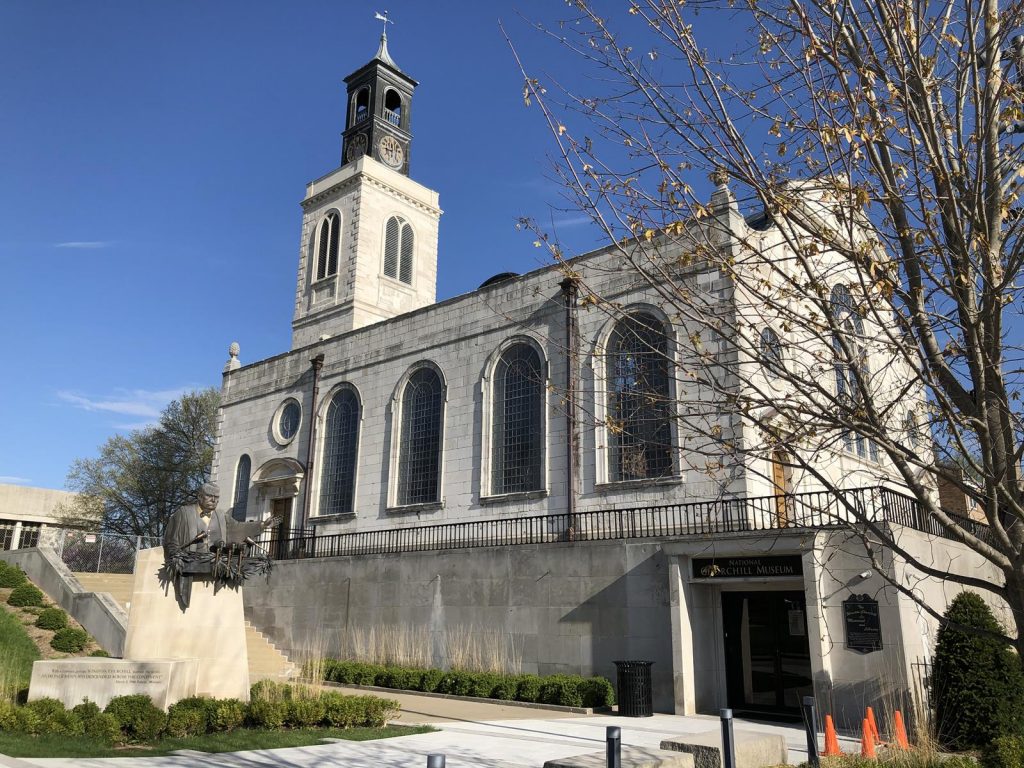
The Church of St. Mary the Virgin, Aldermanbury looms above the entrance to America’s National Churchill Museum.(Randy Mink Photo)
Though St. Mary’s had acquired Victorian additions and embellishments, the rebuilt version is faithful to the original Wren plan. The church’s history actually goes all the way back to the 12th century; Wren, the leading English church architect of the time, had redesigned the medieval church after the Great Fire of London in 1666 had destroyed it.
The only medieval stones brought over to Fulton were the stairs that once led to the crypt. They now lead from the organ loft to the bell tower, whose bells chime every 15 minutes on the quarter hour. Near the stairway is a bust of William Shakespeare, who lived near the church. The tower’s clock and weather vane are not original, and the building’s wood is mostly new. One wood section and other architectural elements are from various English churches. The initial phase of the church’s current preservation project, with $1.3 million spent so far, is nearing completion. (After being closed for renovations during the COVID-19 pandemic, both the church and museum will reopen to the public on July 30.)

The Church of St. Mary the Virgin, Aldermanbury was dismantled stone by stone and then reassembled on the campus of Westminster College. (Photo credit: VisitMO.com)
In London, the site of the Church of St. Mary the Virgin, Aldermanbury is now a park. A plaque notes that the building was relocated to the American city of Fulton, Missouri.
St. Mary’s symbolizes the special relationship between Britain and the United States. The son of an American mother and a British father, Churchill strongly believed in the common heritage shared by the two countries and alluded to the close ties in his Fulton speech.
Near the reconstructed church stands Breakthrough, a monumental sculpture crafted by Churchill’s granddaughter, artist Edwina Sandys, from eight sections of the Berlin Wall. The largest remnant of the wall outside of Berlin, Germany, the piece illustrates the fall of the wall in 1989, an event that signaled the end of Communism in Eastern Europe—one that Churchill would have relished.
The church today is used for concerts, weddings and special services. Groups booking a tour of the museum and church can include a music recital featuring the church’s beautiful pipe organ. During the school year, they can have a buffet lunch in the college’s vaulted Backer Dining Hall, nicknamed “Hogwarts” by students in honor of the dining hall in the Harry Potter books.
An Inn for History Lovers
Small groups, such as a girlfriend getaway or cadre of passionate history buffs, can get their Anglophile fix at the Loganberry Inn, a six-room, bed-and-breakfast home just down the street from the Churchill museum. Former British Prime Minister Margaret Thatcher and her official party stayed at the inn when she spoke at Westminster College in 1996. Memorabilia in the dining room includes an autographed black-and-white picture of Thatcher, the four-course dinner menu and her signature in the inn’s guestbook. Also displayed are photos of other distinguished guests, including former Polish President Lech Walesa, former U.S. Secretary of State Madeleine Albright and former Soviet leader Mikhail Gorbachev, who in 1992 spoke at the college, in effect giving the benediction to the Cold War that Churchill had declared years ago.
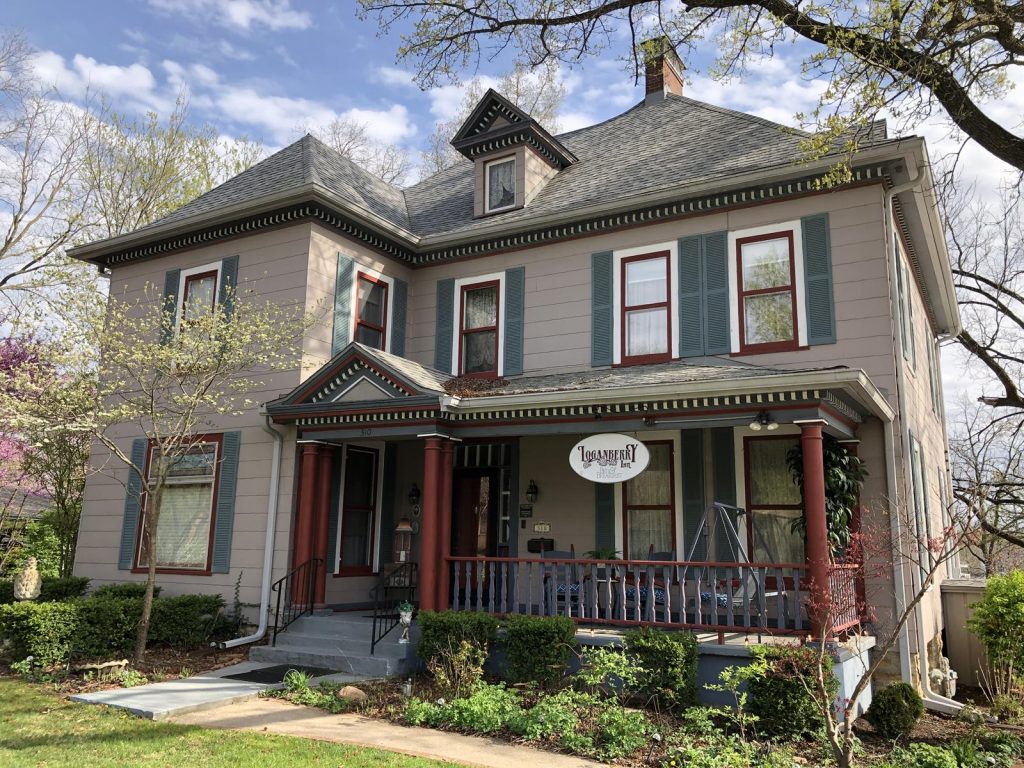
The Loganberry Inn lies just down the street from America’s National Churchill Museum. (Randy Mink Photo)
Guests of the Loganberry Inn, built as a private home in 1899, can relax in the high-ceilinged parlor, which is furnished Victorian-style with period furniture and wallpaper, long lace curtains, frilly lampshades and area rugs. Oil lamps and silk flowers accent the fireplace. Each guest room has a fireplace, too.
The occupant of the Winston Churchill Room, the only bedroom on the first floor, can take after the charismatic politician by imbibing some brandy from the decanter placed next to the king bed. (There are no cigars.) The walls bear a picture of London’s Big Ben and an enlarged photo of Churchill and Truman in Fulton. On the bookshelf are titles like The Wit and Wisdom of Winston Churchill by James C. Humes (with foreward by Richard M. Nixon) and Winston Churchill: Passion for Painting, autographed by its author, Edwina Sandys, and with foreward by Boris Johnson, then mayor of London and now Britain’s prime minister.

The Loganberry Inn’s Winston Churchill Room comes with a decanter of brandy, a favorite drink of the British statesman. (Randy Mink Photo)
Downtown’s historic Brick District, named for the cobblestone streets, is an easy walk from the Loganberry Inn. Tour members can spend time in the specialty shops. The 1940s soda fountain at Saults Drug Store dishes up ice cream treats. GoPo Gourmet Popcorn offers free samples of flavors like dark chocolate sea salt and cookies ’n’ cream. Anchoring the district is the Callaway County Courthouse.
A Store Steeped in Yesteryear
One of the county’s premier group-tour magnets is Crane’s Country Store, a fixture in Williamsburg since 1889. Located off of Interstate 70, the old-fashioned emporium, owned by the fourth generation of the Crane family, peddles everything from groceries and hardware to work clothes and hunting gear. The store carries clothing brands like Pendleton, Carhartt, Dickies, Filson and Wolverine. Its eclectic offerings are summed up in its catchy alliterative slogan: “Boots, Bullets, Britches, Bologna.”
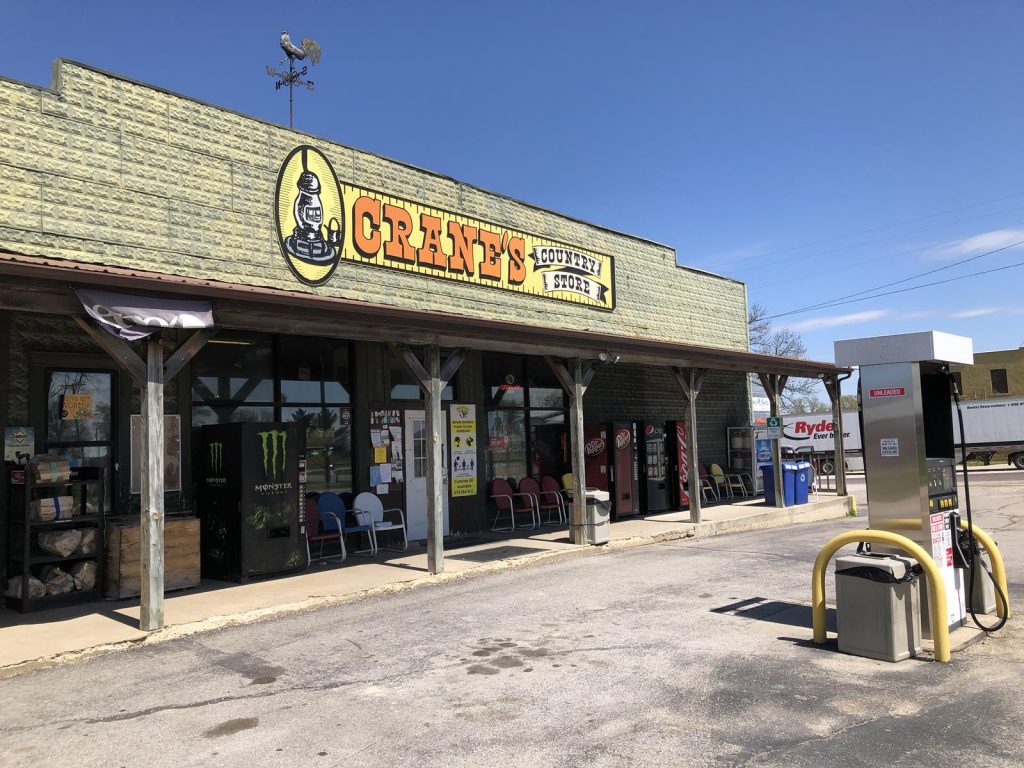
Crane’s Country Store. (Randy Mink Photo)
Sandwiches on Wonder bread, with choice of one meat and one cheese, are $2, but the price drops to $1 if the meat is bologna. Grab a bag of chips and a pop and you have a cheap lunch that can be eaten on the front porch.
The current building dates from 1926 and has a working potbelly stove from the 1930s. Chairs are set up in the middle of the store for the Liars Club, a group of local men who gather every Thursday to shoot the breeze. Antiques festoon the rafters and ceilings.

Merchandise at Crane’s Country Store ranges from hiking boots, hunting gear and flannel shirts to groceries, hardware and bologna sandwiches. (Randy Mink Photo)
Nostalgia also flavors the neighboring Marlene’s restaurant/museum building, which features many more antiques in the family collection. Treasures range from toy trucks and dollhouses to sleigh bells, arrowheads and Missouri license plates. Large items include a 1927 Chevrolet Touring Car, vintage gas pumps and an 1844 wooden carousel horse.
Four long tables accommodate tour groups choosing to dine amidst the artifacts. Meatloaf, fried chicken, lasagna and roast beef are among the entree choices for lunch or dinner. Marlene’s regular menu has sandwiches, burgers, salads, chili and soup, and the eatery makes a good ice cream stop. Breakfast is served, too.
Classic Cars and Fruit of the Vine
The good old days also come alive at Fulton’s Auto World Museum, where more than 80 vintage vehicles are displayed against expansive photographic backdrops. Some of the artistically designed sets show images of early Fulton.
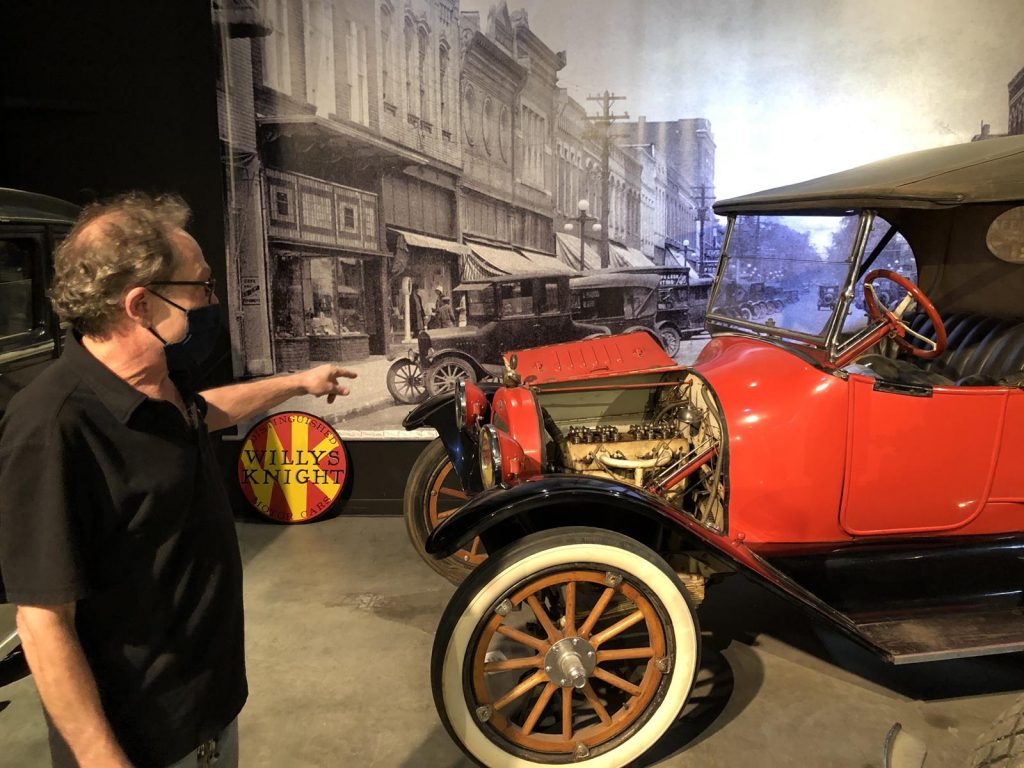
Artistically designed sets enhance the cars on display at Auto World Museum in Fulton, Missouri. (Randy Mink Photo)
Collected by the late Bill Backer of Fulton’s Backer Potato Chip Co., the cars date from 1903 to 1987. Among the restored beauties are a 1926 Pierce Arrow Touring Car (the most valuable), 1941 Lincoln Continental, 1947 Hudson pickup truck, 1963 Chevrolet Corvette Stingray, 1974 Ford Thunderbird and 1982 DeLorean Coupe.
In an area outfitted with re-creations of an old-time diner and gas station, groups can schedule a catered meal surrounded by cars. For entertainment, they can view one of the episodes in which the antique hounds of TV’s “American Pickers” visited Auto World.
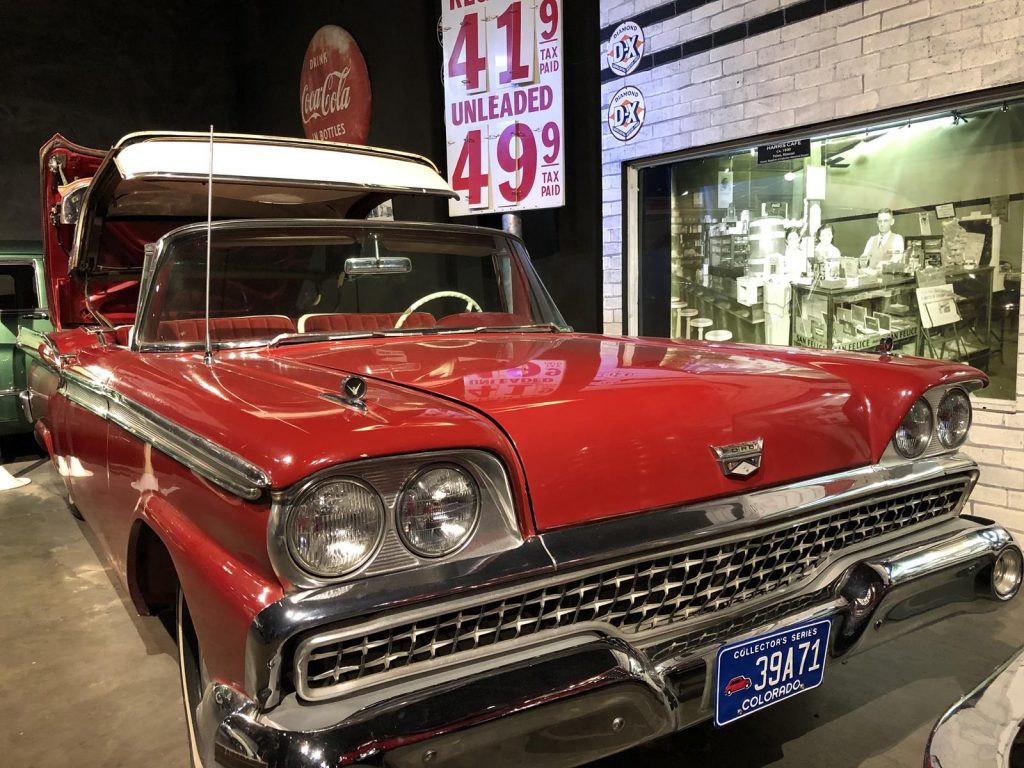
Auto World Museum, a treasure chest brimming with nostalgia. (Randy Mink Photo)
For a relaxing meal or wine tasting, groups in the Fulton area can spend some time at Serenity Valley Winery. At tables overlooking the lake or farm fields on the 60-acre estate, they can sip wines like Serenade, a sweet white with peach and apricot, or Fiery Opal, a semi-sweet red with cranberry. Bestsellers are Spring Blossom, a green apple Riesling, and Sigh No More, a sweet red wine with acai berry and raspberry. The wines are made with juices from around the world; there are no vineyards on-site. Live music is featured Saturday evenings from May to October.
Special for groups is the winery’s toasted croissant sandwich made with two slices of oven-roasted turkey, two slices of Havarti cheese and apple butter. It’s toasted just until the cheese begins to melt and the croissant becomes crisp. The sandwich is served with a cookie, chips and a drink. A salad meal also can be arranged.
Another College Worth a Stop
Touring the equestrian complex at William Woods University is another itinerary possibility for groups in Fulton. The first university in the U.S. to offer a four-year degree in equestrian science (1972), it is home to about 140 show-quality horses, with more off-site. Facilities include four heated barns, eight tack rooms, two heated indoor arenas, four turnout paddocks and a lighted outdoor ring. William Shatner, Patrick Duffy and Wayne Newton are among celebrities who have donated horses to the program. Equestrian studies is a major or minor for a quarter of all WWU students.

William Woods College is renowned for its equestrian studies programs. (Randy Mink Photo)
A tour of William Woods also may include a stop at the gym, where exhibits spotlight the achievements of sprinter Helen Stephens, an 18-year-old student who excelled at the 1936 Summer Olympics in Berlin. On display are her gold medals and photos with Adolf Hitler and American track-and-field star Jesse Owens. Known as the “Fulton Flash,” Stephens (born and raised in Fulton) coached track at the school in the late 1970s, and the sports complex bears her name.
Fulton is 100 miles west of St. Louis and 150 miles east of Kansas City. Jefferson City is 20 miles south and Columbia is 25 miles west.
For tourist information on the Fulton area, log on to the website for Callaway County Tourism, www.visitfulton.com. To customize a group visit, contact Renee Graham at 573-642-7692 or visitfulton@gmail.com.
—By Randy Mink, Senior Editor



